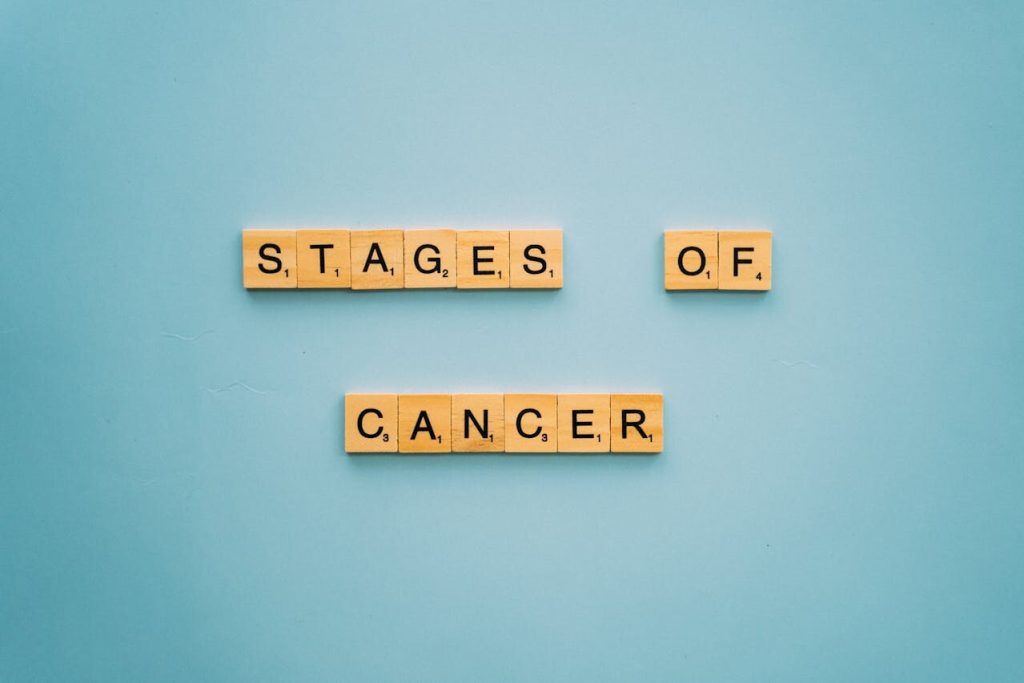When it comes to breast cancer treatment, one of the most common questions patients ask is: how long does it take? Unfortunately, there is no one-size-fits-all answer to this question, as the duration of treatment can vary widely depending on a range of factors. In this article, we’ll explore what impacts the length of breast cancer treatment and provide an overview of the different treatment options available.
Key Takeaways:
- The length of breast cancer treatment can vary based on several factors, including the stage and type of cancer, the patient’s overall health, and the chosen treatment approach.
- Treatment options for breast cancer include surgery, chemotherapy, radiation therapy, hormone therapy, and targeted therapy.
Factors Affecting the Duration of Breast Cancer Treatment
The duration of breast cancer treatment can vary greatly depending on a variety of factors. The stage and type of breast cancer, the patient’s overall health, and the treatment approach chosen can all play a role in determining the length of treatment.
Stage and Type of Breast Cancer: The stage and type of breast cancer can have a significant impact on the duration of treatment. In general, early-stage breast cancer may require less extensive treatment and therefore a shorter treatment duration than advanced-stage breast cancer.
Patient’s Overall Health: The patient’s overall health and any other medical conditions they may have can also influence the duration of breast cancer treatment. Patients who are in good health may be better able to tolerate more aggressive treatment, which may shorten the overall treatment duration.
Treatment Approach Chosen: The treatment approach chosen can also affect the length of treatment. For example, patients who choose to undergo surgery may have a shorter overall treatment duration than those who opt for chemotherapy or radiation therapy.
Individual Variations: It is important to note that each patient is unique and may experience variations in the duration of breast cancer treatment. Factors such as the patient’s age, gender, and overall response to treatment can all influence the length of treatment.
By taking these factors into account, healthcare providers can work with their patients to develop personalized treatment plans that optimize outcomes while minimizing the overall duration of treatment.
Traditional Treatment Options for Breast Cancer
There are several traditional treatment options for breast cancer, and the choice of treatment typically depends on the stage and type of cancer, as well as the patient’s overall health. The standard treatment options include:
| Treatment | Description |
|---|---|
| Surgery | The removal of cancerous tissue from the breast, which may involve a lumpectomy, mastectomy, or breast reconstruction. |
| Chemotherapy | The use of drugs to kill cancer cells, which may be administered intravenously or orally and can have various side effects. |
| Radiation Therapy | The use of high-energy radiation to destroy cancer cells and shrink tumors, which may be administered externally or internally. |
| Hormone Therapy | The use of medications to block hormone receptors and prevent the growth of cancer cells that rely on hormones to thrive. |
| Targeted Therapy | The use of drugs that specifically target cancer cells, which may be administered intravenously or orally and can have fewer side effects than chemotherapy. |
The duration and intensity of each treatment can vary depending on the individual patient’s needs and circumstances. A comprehensive, individualized treatment plan is typically developed by a multidisciplinary team of specialists to ensure the best possible outcomes.
Holistic Treatment Modalities at the Cancer Center for Healing
The Cancer Center for Healing, under the guidance of Dr. Leigh Erin Connealy, offers a comprehensive approach to cancer care that goes beyond conventional treatment options.
The center’s holistic treatment modalities are designed to address the whole person, not just the disease, and include:
| Treatment Modality | Description |
|---|---|
| IV Nutrient Therapy | Provides high doses of vitamins, minerals, and other nutrients directly to the bloodstream for maximum absorption and efficacy. |
| Acupuncture | Ancient Chinese practice that involves the insertion of thin needles into specific points on the body to promote healing and relieve pain. |
| Naturopathic Medicine | Uses natural remedies such as herbal supplements, homeopathy, and dietary changes to support the body’s natural healing processes. |
| Oxygen Therapy | Increases oxygen levels in the body, which can help fight cancer cells and improve overall health. |
By integrating these holistic modalities into a personalized treatment plan, the Cancer Center for Healing aims to not only treat the cancer but also to support the patient’s overall health and well-being.
This comprehensive approach can contribute to the overall duration of breast cancer treatment, but also has the potential to improve outcomes and quality of life.
Surgical Options for Breast Cancer Treatment
Surgery is often a primary treatment option for breast cancer patients, and the type of surgery chosen can influence the duration of treatment. There are three main surgical options for breast cancer: lumpectomy, mastectomy, and breast reconstruction.
Lumpectomy, also known as breast-conserving surgery, involves the removal of the cancerous portion of the breast, as well as a margin of healthy tissue surrounding it. This procedure is typically followed by radiation therapy to ensure the cancer has been fully eradicated from the breast. The duration of treatment for lumpectomy can vary, ranging from a few weeks to several months depending on the type and duration of radiation therapy.
Mastectomy involves the removal of the entire breast, including the nipple and areola. Patients may choose to undergo breast reconstruction surgery to rebuild the breast mound, either at the time of the mastectomy or at a later date. The duration of treatment for mastectomy and breast reconstruction can range from several weeks to several months, depending on the extent of the surgery and recovery time.
Surgical Options for Breast Cancer Treatment
| Surgical Option | Description | Duration of Treatment |
|---|---|---|
| Lumpectomy | Removal of cancerous portion of breast, followed by radiation therapy | A few weeks to several months |
| Mastectomy | Removal of entire breast, may include breast reconstruction surgery | Several weeks to several months |
Chemotherapy and its Role in Breast Cancer Treatment
Chemotherapy is a common treatment option for breast cancer that involves the use of powerful drugs to destroy cancer cells. The number of chemotherapy cycles and the intervals between treatments can vary depending on the patient’s individual circumstances, such as the stage and type of breast cancer, age, overall health, and other factors.
Chemotherapy can be given in different ways, including intravenously (through a vein), orally (in pill form), or through injections into the muscle or under the skin. The drugs used in chemotherapy are designed to target rapidly dividing cancer cells, but they can also affect healthy cells that are also rapidly dividing, such as those in the hair follicles and the lining of the digestive tract, resulting in side effects such as hair loss, nausea and vomiting, and fatigue.
The duration of chemotherapy treatment can range from a few weeks to several months, depending on the specific drugs used, how well the patient responds to treatment, and the overall treatment plan. In some cases, chemotherapy may be used before surgery to shrink the tumor and make it easier to remove, and in others, it may be used after surgery to kill any remaining cancer cells and reduce the risk of recurrence.
Radiation Therapy and its Impact on Breast Cancer Treatment Duration
Radiation therapy is a common treatment for breast cancer that uses high-energy rays to kill cancer cells. The length of radiation therapy can vary depending on the patient’s individual circumstances and the type of radiation therapy used.
Typically, radiation therapy for breast cancer is administered daily over a period of several weeks. The number of sessions required can vary from person to person, ranging from as few as 5 to as many as 30 or more.
The overall treatment duration can also be influenced by the patient’s breast cancer stage and whether they have undergone surgery or other treatments before radiation therapy. For example, if a patient has already undergone a mastectomy, radiation therapy may be shorter in duration compared to a patient who has opt for a lumpectomy.
Sometimes, radiation therapy may be recommended following chemotherapy or hormone therapy, in which case the intervals between treatments may also impact the overall duration of radiation therapy. Patients should discuss their individual radiation therapy treatment plan with their healthcare provider to better understand the duration and intervals of their treatment.
Surgical Options for Breast Cancer Treatment
Surgery is a common and effective treatment option for breast cancer, and the specific procedure chosen can impact the length of treatment. The type of surgical approach may depend on the stage of breast cancer and the patient’s personal preferences.
A lumpectomy involves removing only the tumor and surrounding tissue, while a mastectomy involves removing the entire breast. Breast reconstruction surgery may also be an option for some patients.
| Surgical Option | Pros | Cons |
|---|---|---|
| Lumpectomy | -Preserves most of the breast tissue -Smaller incision and shorter recovery time -Fewer long-term side effects compared to mastectomy |
-Radiation therapy may still be needed -Higher risk of cancer recurrence compared to mastectomy |
| Mastectomy | -Removes entire breast, reducing risk of cancer recurrence -No need for radiation therapy in some cases -May be combined with breast reconstruction surgery |
-Longer recovery time and larger incision -Higher risk of long-term side effects such as lymphedema |
| Breast Reconstruction | -Restores natural appearance of the breast -Can be done at the same time as mastectomy |
-Additional surgery and recovery time required -Risk of complications such as infection and implant rupture |
Discussing the available surgical options with a healthcare provider can help patients make informed decisions about their treatment plan and potential impact on duration of treatment.
Targeted Therapy and its Impact on Breast Cancer Treatment Length
Targeted therapy is a type of cancer treatment that focuses on attacking specific molecules within cancer cells. It is an effective option for patients with certain types of breast cancer, such as HER2-positive breast cancer, and can be used in combination with other treatment modalities such as chemotherapy.
The duration of targeted therapy in breast cancer treatment can vary based on several factors. One of the most significant factors is the specific targeted therapies used. Some targeted therapies are administered orally, while others are given intravenously. The frequency and duration of treatment may depend on the type of medication prescribed and how well the patient responds to treatment.
Another factor that can influence the length of targeted therapy is the stage of breast cancer. Patients with early-stage breast cancer may receive targeted therapy for a shorter duration than those with advanced-stage breast cancer. Additionally, patients who have achieved a complete response to targeted therapy may be able to discontinue treatment earlier than those who have not.
Response to treatment is also a key factor in determining the length of targeted therapy. Patients who respond well to targeted therapy may be able to discontinue treatment earlier, while those who do not respond as well may require longer treatment periods.
Overall, the length of targeted therapy in breast cancer treatment can vary widely depending on individual patient factors. It is important for patients to work closely with their healthcare team to develop a personalized treatment plan that takes into account their specific needs and goals.
Personalized Treatment Plans and Individual Variations in Breast Cancer Treatment Duration
When it comes to breast cancer treatment, there is no one-size-fits-all approach. Personalized treatment plans that take into account individual patient factors and variations are essential in optimizing outcomes and minimizing treatment duration.
Factors such as the stage and type of breast cancer, the patient’s overall health, and the treatment approach chosen can all play a role in determining the length of breast cancer treatment. This is why it’s important for doctors to create treatment plans that are tailored to each patient’s unique circumstances.
Personalized treatment plans can include a combination of traditional treatment modalities, holistic approaches, and integrative therapies. By taking a comprehensive approach that addresses physical, emotional, and psychological needs, patients can better manage symptoms, side effects, and other treatment-related issues that may arise during the course of their cancer journey.
Additionally, personalized treatment plans can help patients better understand their treatment options, risks, and benefits. This can lead to increased confidence and satisfaction with the treatment process, which can ultimately impact treatment adherence and outcomes.
Overall, personalized treatment plans are an essential component of breast cancer care that takes into account individual variations and factors that can impact treatment duration. By working closely with healthcare providers, patients can receive the best possible care and support throughout their cancer journey.
Supportive Care and its Role in Breast Cancer Treatment Length
Supportive care is an essential component of breast cancer treatment, playing a critical role in managing treatment-related side effects and improving overall quality of life. By addressing the physical, emotional, and spiritual needs of patients, supportive care can help minimize treatment interruptions and optimize outcomes.
Common supportive care interventions for breast cancer patients may include pain management, nausea and vomiting control, stress reduction techniques, and nutritional counseling. Supportive care can also involve psychosocial interventions, such as counseling and support groups, to address the emotional and social challenges of living with cancer.
Integrating supportive care into a patient’s breast cancer treatment plan can influence the duration of treatment by reducing the likelihood of treatment interruptions and complications that may require additional medical attention. This can ultimately lead to a smoother treatment experience and improved overall outcomes.
Integrative Approaches to Breast Cancer Treatment and Time Required
In addition to standard treatment options, the Cancer Center for Healing under the care of Dr. Leigh Erin Connealy offers integrative approaches to breast cancer treatment. Integrative treatment plans incorporate complementary therapies alongside traditional treatments, addressing the physical, emotional, and spiritual needs of patients.
Integrative therapies offered at the Cancer Center for Healing may include acupuncture, nutrition counseling, massage therapy, and mind-body techniques such as yoga and meditation. These therapies can help to reduce stress, manage treatment-related side effects, and improve overall quality of life.
While the addition of integrative therapies may lengthen the overall treatment time, research has shown that they may help to improve treatment outcomes as well as reduce the risk of recurrence. A 2014 study published in the Journal of the National Cancer Institute found that breast cancer survivors who participated in yoga and meditation programs experienced a reduction in symptoms of depression and fatigue.
Integrative approaches may also help to promote overall well-being and address underlying imbalances that may contribute to the development of cancer. By focusing on the whole person, integrative treatments can help to strengthen the immune system and support the body’s natural healing processes.
At the Cancer Center for Healing, patients receive individualized treatment plans that take into account their unique circumstances and preferences. Dr. Connealy works closely with each patient to develop a comprehensive approach to breast cancer care that addresses their specific needs and goals.
Conclusion
Overall, the duration of breast cancer treatment can vary depending on various factors, including the patient’s individual circumstances and the treatment approach chosen. It is important to work with a healthcare team that is experienced in providing personalized treatment plans and incorporating a holistic approach to cancer care.
At the Cancer Center for Healing, under the care of Dr. Leigh Erin Connealy, patients have access to a comprehensive range of holistic treatment modalities, including nutritional therapy, acupuncture, and ozone therapy, among others. By integrating these complementary therapies with conventional treatments, patients can optimize outcomes and potentially reduce the overall time required for treatment.
It is important to prioritize supportive care throughout the course of breast cancer treatment to help manage treatment-related side effects and improve overall quality of life. Patients should also feel empowered to ask their healthcare team questions about their treatment plan and to proactively discuss any concerns or questions they may have.
To learn more about personalized treatment plans and holistic approaches to breast cancer treatment, schedule a consultation at the Cancer Center for Healing with Dr. Leigh Erin Connealy today.
FAQ
Q: How long is breast cancer treatment?
A: The duration of breast cancer treatment can vary depending on several factors.
Q: What factors can affect the duration of breast cancer treatment?
A: The stage and type of breast cancer, the patient’s overall health, and the chosen treatment approach are factors that can impact the length of treatment.
Q: What are the traditional treatment options for breast cancer?
A: Traditional treatment options for breast cancer include surgery, chemotherapy, radiation therapy, hormone therapy, and targeted therapy.
Q: What holistic treatment modalities are offered at the Cancer Center for Healing?
A: The Cancer Center for Healing offers holistic treatment modalities under the care of Dr. Leigh Erin Connealy, providing a comprehensive approach to cancer care.
Q: What are the surgical options for breast cancer treatment?
A: Surgical options for breast cancer treatment include lumpectomy, mastectomy, and breast reconstruction.
Q: What is the role of chemotherapy in breast cancer treatment?
A: Chemotherapy plays a crucial role in breast cancer treatment, and the number of cycles and intervals between treatments can influence the overall duration of treatment.
Q: How does radiation therapy impact the duration of breast cancer treatment?
A: Radiation therapy can vary in the number of sessions and overall treatment duration depending on the patient’s individual circumstances.
Q: How long does hormone therapy last in breast cancer treatment?
A: The duration of hormone therapy in breast cancer treatment depends on factors such as hormone receptor status and the specific medications prescribed.
Q: What is the duration of targeted therapy in breast cancer treatment?
A: The duration of targeted therapy in breast cancer treatment can be influenced by factors such as the specific targeted therapies used, response to treatment, and the stage of breast cancer.
Q: How do personalized treatment plans and individual variations affect the duration of breast cancer treatment?
A: Personalized treatment plans and individual variations can impact the duration of breast cancer treatment, highlighting the importance of individualized approaches for optimizing outcomes.
Q: What role does supportive care play in the duration of breast cancer treatment?
A: Supportive care is essential in managing treatment-related side effects and improving overall quality of life, which can impact the duration of breast cancer treatment.
Q: How do integrative approaches to breast cancer treatment affect the time required?
A: Integrative approaches combining conventional treatments with complementary therapies can influence the overall time required for breast cancer treatment.






